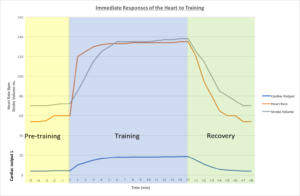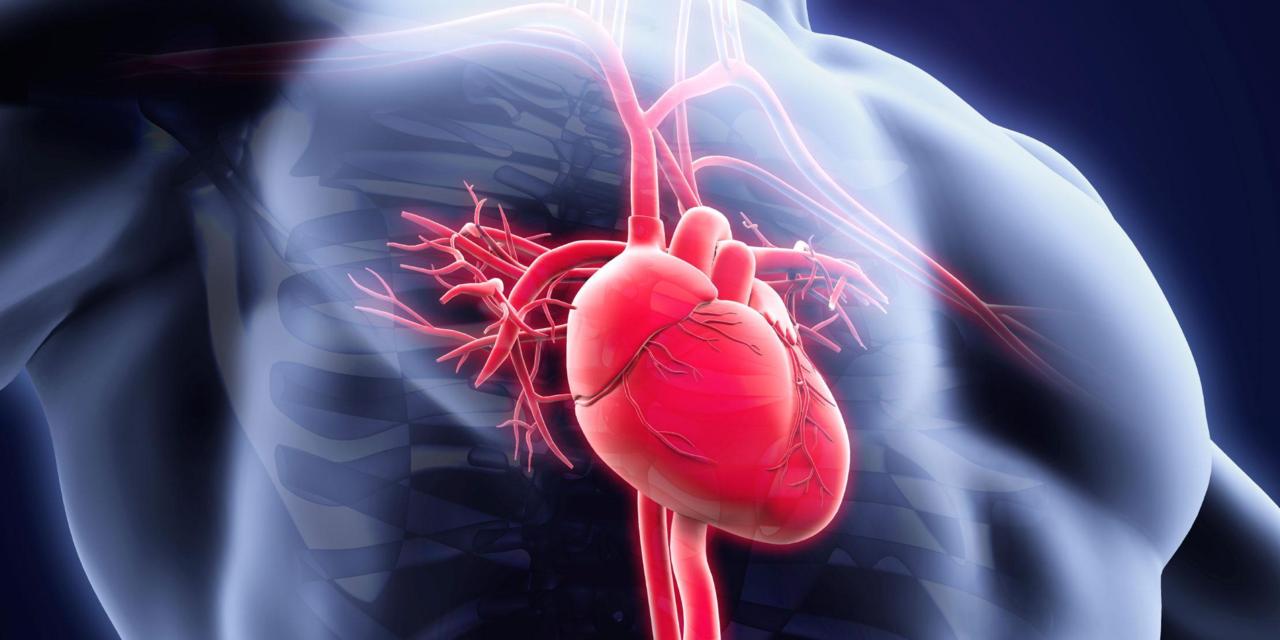Cardiac output is the amount of blood pumped out of the let ventricle in a minute. It can be calculated by multiplying the stroke volume by the heart rate and is usually given in litres per minute. Since we already know that stroke volume and heart rate both increase in response to training, it goes without saying that cardiac output also increases in response to training.
Cardiac Output = Stroke Volume X Heart Rate
Cardiac output immediately increases in response to training and is directly related to the intensity of the workout. For example, an athlete who is cycling and producing 200 watts of energy will have a lower cardiac output than when they are cycling at 400 watts.
The reasons why cardiac output increases in response to training include:
- greater blood flow back to the heart, creating a larger stroke volume
- less resistance to blood flow due to vasodilation
- an increased demand for oxygen and nutrients by the working muscles
- larger production of carbon dioxide during exercise
Your body responds, particularly to the increase in carbon dioxide, by increasing the body’s cardiac output. This is achieved by increasing the stroke volume of the heart and increasing the heart rate. It is the increases in stroke volume and heart rate that produce the increase in cardiac output. Without these increases, the cardiac output would remain the same.

This graph depicts the immediate physiological responses of the heart to training. It is clear that there is a rise in SV and HR, which in turn causes an increase in CO. It is SV that increases first and then HR, making SV responsible for the initial rise in CO and then increases in HR responsible for further increases. Both HR and SV slowly return to resting levels after training, which naturally brings CO to resting levels also.

